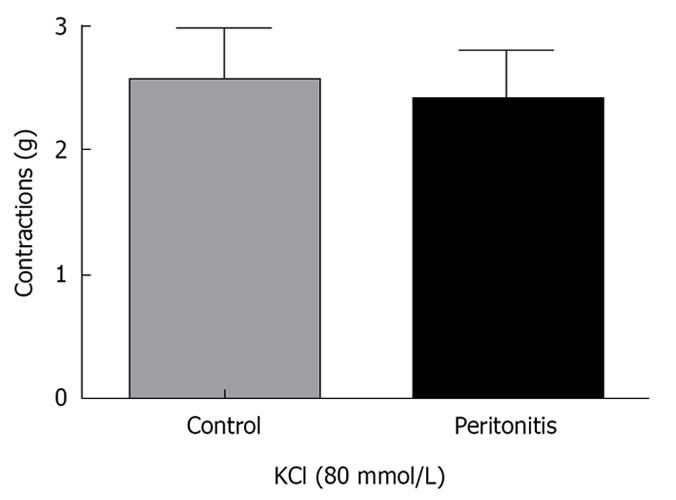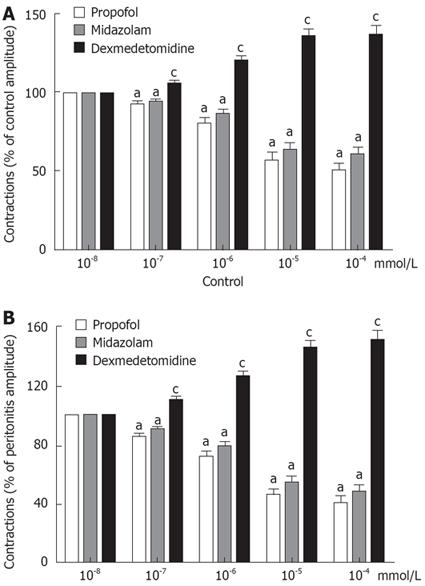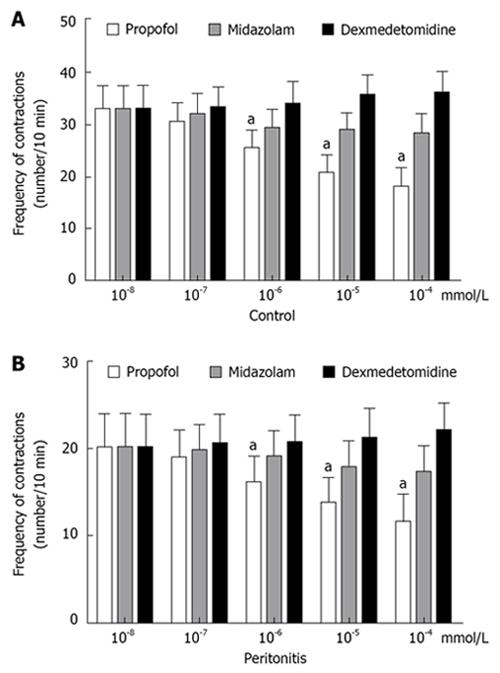Copyright
©2009 The WJG Press and Baishideng.
World J Gastroenterol. Apr 7, 2009; 15(13): 1620-1624
Published online Apr 7, 2009. doi: 10.3748/wjg.15.1620
Published online Apr 7, 2009. doi: 10.3748/wjg.15.1620
Figure 1 KCl (80 mmol/L) induced contractions of isolated ileum muscle segments in control and peritonitis groups.
No statistical difference was observed between groups (P > 0.05).
Figure 2 Changes in the spontaneous contractions of the isolated ileum muscle segments.
A: Amplitudes were calculated as a percentage of the contraction induced by KCl (80 mmol/L) from both control and peritonitis groups; B: Frequencies were expressed as the number of contractions for 10 min from both control and peritonitis groups. (aP < 0.05 vs control group; analysis of variance followed by Newman-Keuls test).
Figure 3 Amplitudes of the contractions induced by anaesthetic agents.
A: Control group; B: Peritonitis group; both were calculated as the percentage of the initial contractions. (aP < 0.05 vs initial contractions, cP < 0.05 vs propofol and midazolam; analysis of variance followed by Newman-Keuls test).
Figure 4 Changes in the frequency of spontaneous contractions.
A: Control group; B: Peritonitis group. Both were expressed as the number of contractions for 10 min. (aP < 0.05 vs initial contractions; analysis of variance followed by Newman-Keuls test).
- Citation: Aydin C, Bagcivan I, Gursoy S, Altun A, Topcu O, Koyuncu A. Altered spontaneous contractions of the ileum by anesthetic agents in rats exposed to peritonitis. World J Gastroenterol 2009; 15(13): 1620-1624
- URL: https://www.wjgnet.com/1007-9327/full/v15/i13/1620.htm
- DOI: https://dx.doi.org/10.3748/wjg.15.1620












